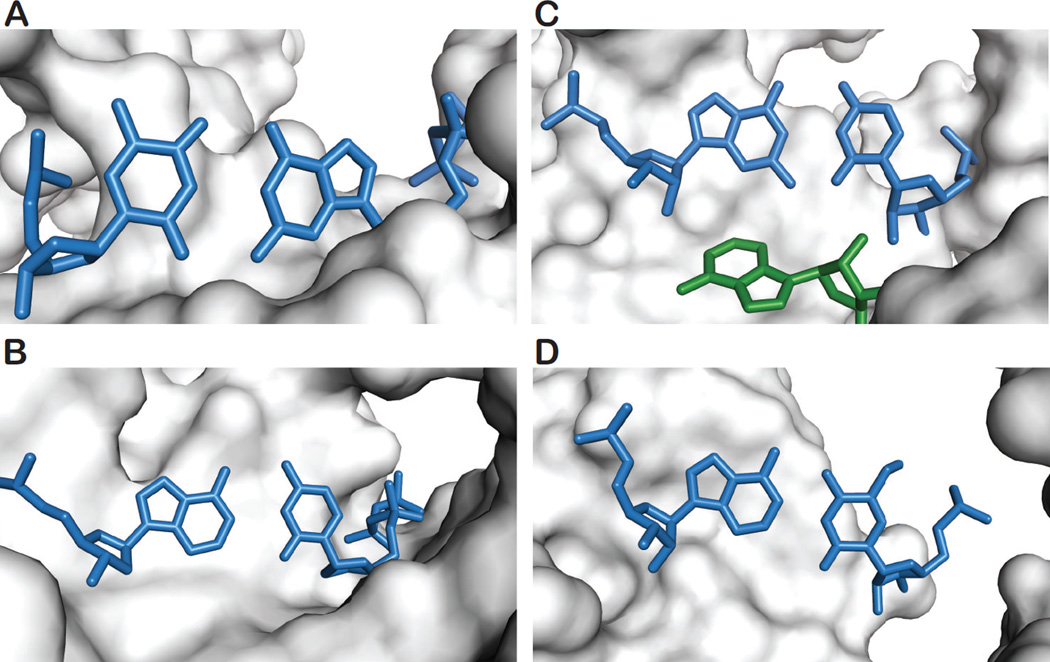Figure 4.
An atomic view of high energy WC-like pur-pyr DNA and RNA mispairs in complex environments. Mismatched pur-pyr pairs are shown in blue. (A) A WC-like G•T mispair in the active site of DNA pol λ, showing an incoming dGTP poised for incorporation against the template T. Enzymatic pH studies suggest that this pair may be ionized, though a rare-tautomeric state could not be ruled out (PDB ID: 3PML). (B) Shown is a WC-like A•C mispair in the active site of DNA pol I with an incoming dCTP poised for incorporation against the template A. The WC-like geometry can be attributed to the rare-tautomeric state of either A or C (PDB ID: 3PX6). (C) A WC-like G-U mispair is shown at the first position of the anti-codon / codon mini-helix of a nearcognate tRNA. The WC-like geometry has been hypothesized to be due to a raretautomeric state of the pair. A ribosomal RNA is shown in green interacting with the minor groove of the mispaired guanosine (PDB ID: 3UYD). (D) A WC-like A-f5C mispair is shown at the wobble position of the human tRNAMet f5CAU where it can allow for the expanded decoding of an isoleucine codon (AUA) (PDB ID: 4GKK).

